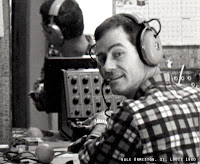The Catalina
“What was your first 120mph experience?” This question appeared on a Facebook post a few weeks ago and it brought back a memory from my college days. To the question itself, I’ll just say, close to 120mph. This happened in the mid 1970s during my sophomore year at SIU Carbondale IL. The experience was in a customized 1966 Pontiac Catalina 389 V8 with two twin-barrel carburetors. During the moment in question I was not in view of or had the presence of mind to read the speedometer. I was sitting in the back seat, while my best friend Art, from Naperville, and his visiting home-town buddy Scott, who owned the car, “Pam”, sat in front and drove. This was part of an episode that took place over a pair of weekend nights when we cruised out of town to a remote stretch of two-lane highway in southern Illinois. There we raced a tribe of locals in their pickups, souped-up rides and shiny new “Bitchin Camaros".
How my friends found out about this clandestine ritual, I can’t recall. It’s likely that someone in town saw Scott with the car and after hearing Scott’s tales of street racing, told him about the gathering. In any case, we arrived on the scene the first night, idling past an assortment of vehicles parked along the road. Before we could stop, a car came up along side, pacing us, then quickly pulled ahead. At that point, Scott floored the pedal, putting the engine into a WOT wide-open throttle. The action caused Pam to slow, just momentarily. Her engine dimmed as if it were about to stall, like taking a breath. Instantly, the engine came roaring back to life, rising in seconds from a low growl to a deafening scream.
The Catalina surged forward and we accelerated rapidly. The car ahead of us was quickly overtaken and swept behind as if it were parked, its headlights fading into the rear view. At top speed, I had the sensation of floating, of feeling weightless, enveloped by the roar of the engine, the night air, the dark countryside shooting by. Scott slowed down and turned the car around. We all laughed hysterically, but Scott and Art would carry on like a pair of con artists, bragging about the suckers who “had no idea what they were up against!” There were one or two more challengers that night, but the result was the same each time. The following week we returned for more fun, but after a single run, the racers challenged us no more.
Our celebration however, was short lived. As we headed back to town, our victory parade was suddenly joined by an Illinois State Trooper. With overheads flashing in full rock concert mode, the officer pulled us over and exited his vehicle, casually inspecting our car as he approached us. The Catalina engine was still hot and the oil light was on, both of which the officer noted. Leaning into the driver's side window, with his flashlight fixed point blank on Scott’s face, the officer coolly asked, “Do you know of anyone racing cars out here?” Scott, however, was a most experienced and savvy juvenile. He was also a lawyer in the making, who not only knew the correct attitude to take with law enforcement, but all the mechanic-laced responses necessary to lower suspicion about the car, and us.
The ride home was quiet and well within the posted speed limit. We took the hint not to be seen in the vicinity again. I thank that officer today, for putting an end to our incredibly fun, most exhilarating, stupid, crazy, and potentially suicidal weekend recreation.
I don’t have any photos of the Catalina, but the car was featured in a short film I made during that semester. Something about a hitchhiker. The movie has since been lost, but while looking through a reel of my old Super8 footage, I found a few discarded clips of film, including a brief drive by of the Catalina, filmed not far from where we had been racing.
*I didn’t take any photos of the Catalina, but I remembered having some Super8. I found the reel and scanned it to video. It was a short film I made for a film school assignment, involving a hitchhiker on a country road, shot probably not far from where we did the racing.

















